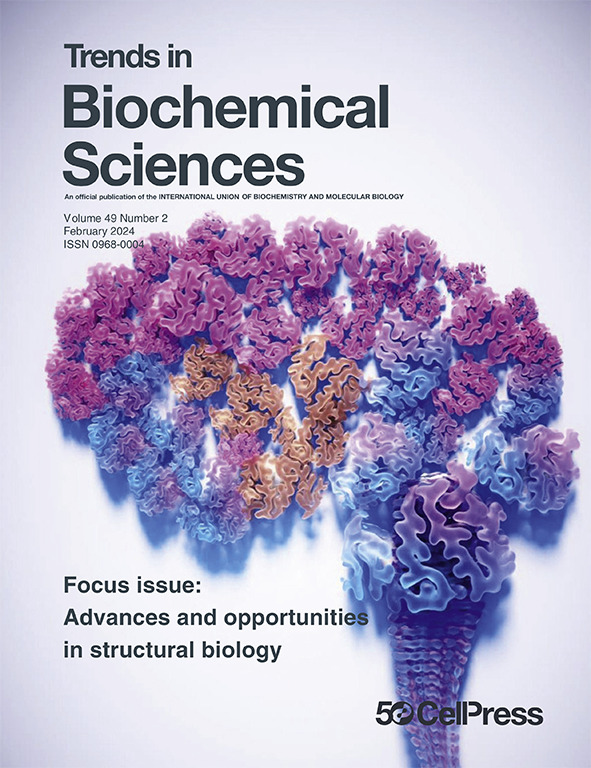HMGB1的内在失序和模糊相互作用驱动其多种功能。
IF 11
1区 生物学
Q1 BIOCHEMISTRY & MOLECULAR BIOLOGY
引用次数: 0
摘要
HMGB1是一种多任务蛋白,本文通过其内在无序区域(idr)驱动的“模糊相互作用”的视角对其进行了仔细研究。虽然该蛋白的多种细胞内和细胞外功能已经研究了几十年,但将HMGB1视为模糊和动态的视角提供了一个新的视角。最近的突破强调了其idr的关键作用,特别是酸性c端尾,在介导动态多价相互作用中。这种模糊性使HMGB1能够调节DNA和染色质结合,陪伴其他蛋白质(如p53),并通过TLR4和CXCR4等受体调节炎症信号。了解HMGB1的模糊性可以开启针对其结构化和非结构化区域的新治疗策略,以治疗一系列疾病。本文章由计算机程序翻译,如有差异,请以英文原文为准。
Intrinsic disorder and fuzzy interactions drive multiple functions of HMGB1
HMGB1, a multitasking protein, is scrutinized here through the lens of the 'fuzzy interactions' driven by its intrinsically disordered regions (IDRs). Although the multiple intracellular and extracellular functions of this protein have been studied for decades, viewing HMGB1 as fuzzy and dynamic provides a novel perspective. Recent breakthroughs emphasize the crucial role of its IDRs, especially the acidic C-terminal tail, in mediating dynamic multivalent interactions. This fuzziness enables HMGB1 to modulate DNA and chromatin binding, to chaperone other proteins such as p53, and to tune inflammatory signals via receptors such as TLR4 and CXCR4. Understanding the fuzzy nature of HMGB1 unlocks new therapeutic strategies targeting both its structured and unstructured regions to tackle a range of diseases.
求助全文
通过发布文献求助,成功后即可免费获取论文全文。
去求助
来源期刊

Trends in Biochemical Sciences
生物-生化与分子生物学
CiteScore
22.90
自引率
0.70%
发文量
148
审稿时长
6-12 weeks
期刊介绍:
For over 40 years, Trends in Biochemical Sciences (TIBS) has been a leading publication keeping readers informed about recent advances in all areas of biochemistry and molecular biology. Through monthly, peer-reviewed issues, TIBS covers a wide range of topics, from traditional subjects like protein structure and function to emerging areas in signaling and metabolism. Articles are curated by the Editor and authored by top researchers in their fields, with a focus on moving beyond simple literature summaries to providing novel insights and perspectives. Each issue primarily features concise and timely Reviews and Opinions, supplemented by shorter articles including Spotlights, Forums, and Technology of the Month, as well as impactful pieces like Science & Society and Scientific Life articles.
 求助内容:
求助内容: 应助结果提醒方式:
应助结果提醒方式:


